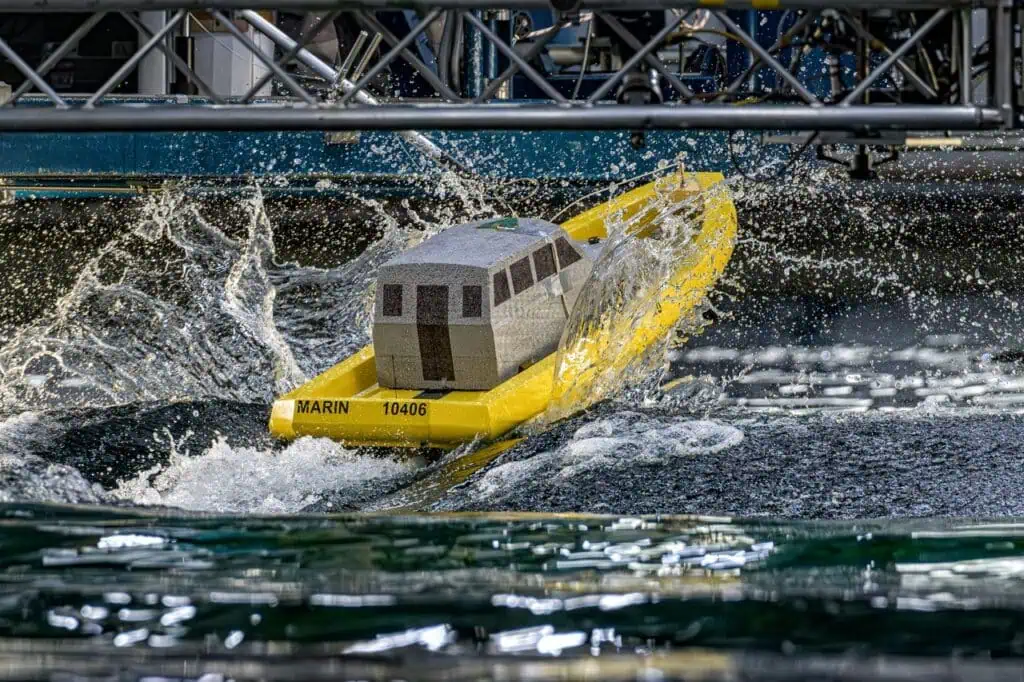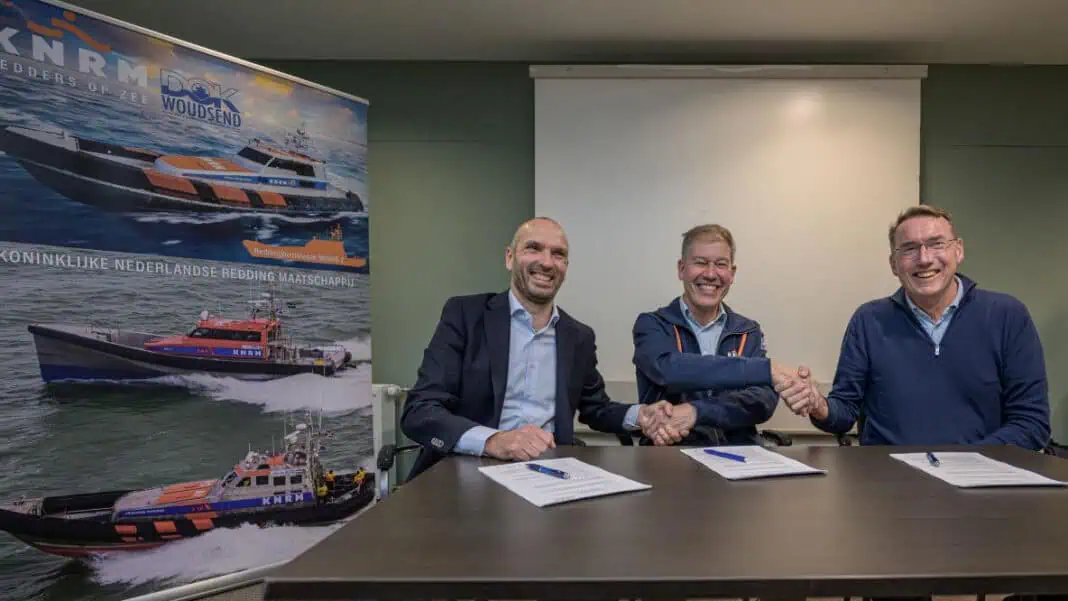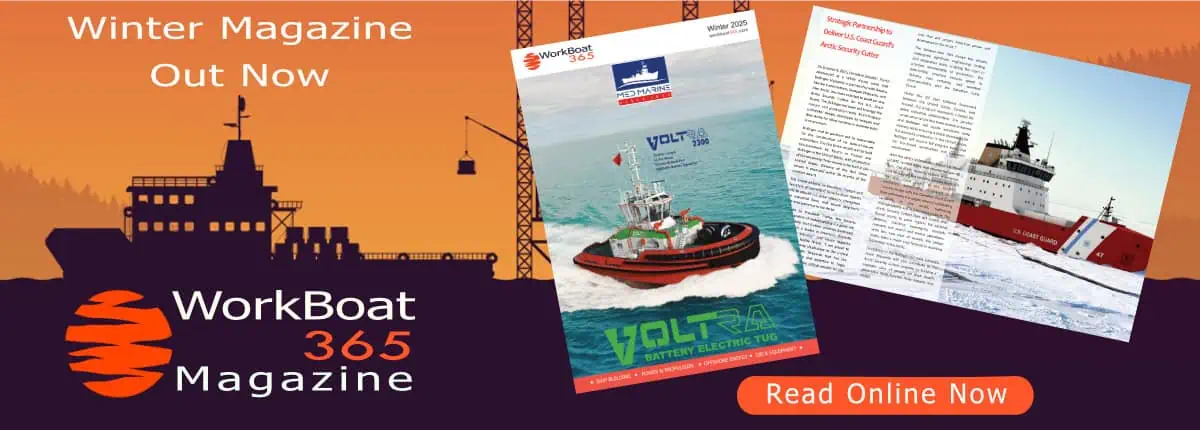The Royal Netherlands Sea Rescue Institution (KNRM) has announced the commissioning of thirteen new lifeboats, marking the largest vessel order in the organization’s 201-year history. Construction will begin in 2026 at the Frisian shipyard Dok en Scheepsbouw Woudsend BV, located in Woudsend.
These are all-weather lifeboats measuring over 19 meters, the largest class of lifeboats in the KNRM’s fleet. All lifeboats are funded by donations, bequests, and contributions from KNRM sponsors. The name of each lifeboat is determined by the sponsor who contributed the majority of the construction costs.
“We are immensely proud that, after a long and careful development process, we have been able to award this contract to a Dutch shipyard,” says Jacob Tas, director of the KNRM. “This new series of lifeboats, with all possible improvements and innovations, will ensure that we can rescue people and animals under all circumstances: safely and reliably, now and especially in the future.”
After a careful tender process, the contract for the construction of the lifeboats has been awarded to Dok en Scheepsbouw Woudsend BV, a shipyard that has been building and maintaining lifeboats for the KNRM (Royal Netherlands Sea Rescue Institution) for many years. This shipyard previously received the contract for the construction of ten Van Wijk-class lifeboats, seven of which are still under construction. This new contract concerns a class of 19 meters in length. Gert-Jan Bleeker, director of Dok en Scheepsbouw Woudsend, is proud to begin construction of the largest KNRM lifeboats: “For a project of this size and significance, we can only say: It giet oan!”
The thirteen lifeboats to be built are a further development of the two existing all-weather lifeboat types: the Arie Visser class and the NH1816, which is over 19 meters long. The NH1816 has been in service since April 2014. The lifeboat was christened by Her Majesty Queen Máxima and was a donation from the NH1816 insurance company’s charitable foundation.

The NH1816 was extensively tested in practice until 2018, after which it was decided to reconsider and develop it further. Therefore, development of a successor began in 2021. A unique aspect of this is that naval architects from Gaastmeer Design BV and the MARIN research institute are working closely with a delegation of volunteers from the lifeboat stations that will operate the new lifeboat class. Together, they ensured that the NH1816-2 will be a lifeboat class that combines the best features of the NH1816 and the Arie Visser class. The NH1816-2 class will have a top speed of 60 km/h, be operational in all weather conditions, and be able to return to its original state after capsizing.
The thirteen lifeboats are intended for the lifeboat stations in Eemshaven, Schiermonnikoog, Ameland, Terschelling, Vlieland, Den Helder, Scheveningen, Hoek van Holland, Stellendam, Neeltje Jans and Breskens, plus two lifeboats for the reserve fleet, which are used as replacements during maintenance.
It’s worth noting that the name of the first lifeboat, a reserve boat, was announced by His Majesty King Willem-Alexander on October 11th of last year. This lifeboat will be called Prince Johan Friso, named after His Majesty’s deceased brother and son of Her Royal Highness Princess Beatrix, the patroness of the KNRM (Royal Netherlands Sea Rescue Institution).
Traditionally, KNRM lifeboats are named by the donor or testator who donated the construction costs or bequeathed them to the KNRM in their will. Names have already been found for nine of the thirteen new lifeboats to be built. The remaining four are expected to receive proud names in the coming years.
John van Doorn (founder of Sail Amsterdam) and his wife are jointly donating the new NH1816-2 to KNRM Ameland. Van Doorn’s connection to the KNRM spans several areas. As a member of the Dutch Cape Horn Sailors’ Association, I read about this history and discovered how many sailors perished on that route in the 18th century: 100,000. That struck me deeply. It made me realize how valuable it is that the Netherlands has a rescue society that rescues people in distress from the North Sea and other waters. I’ve always had a connection to water. I’ve been sailing since I was twelve and have owned both small and large sailing ships. Now we sail a 12-meter sailing yacht. I was also a merchant navy officer for two years before starting my studies. And as chairman of the Amsterdam Harbor Choir, I sing many songs about people who perish at sea or are rescued at the last minute. All of this connects me to the KNRM (Royal Netherlands Sea Rescue Institution). And of course, that time the volunteers towed me from a sandbank in Zeeland. Our condition was that it be a seaworthy lifeboat. Such a large ship has to sail at sea, for rescues or training purposes.
With 75 lifeboats along the coast, the KNRM is available day and night for emergencies at sea and on the wider inland waters. The lifeboats range in length from 5 to over 19 meters. Some of these boats can even be deployed in winds of force 12. Therefore, these vessels must meet the highest standards and be in top condition. A large portion of the current rescue fleet consists of lifeboats from 1991 and later. The vessels are well-maintained and safe for the volunteers, but maintenance costs are increasing and the risk of breakdowns is increasing. Since the start of the fleet renewal in 2021, the 75 lifeboats will be replaced by new ones until 2035.
The KNRM is a rescue organization that exists solely thanks to the work of over 1,500 volunteers at its 45 rescue stations and the voluntary contributions of over 135,000 donors. Rescue work is free and funded by donations from individuals, businesses, and foundations. The KNRM has been rescuing and providing aid since 1824 without government subsidies, but it fulfills its role on behalf of the government, primarily for anyone experiencing difficulties on the water.
The total fleet renewal of 75 lifeboats by 2035 will cost €120 million. Almost 70% of this has already been pledged by donors and bequests, but the Rescue Society still needs to raise funds for the remaining 30%. The KNRM is confident that donors will be found for these boats in the coming years. With this investment, the KNRM is investing in the future of a safe sailing area in the Netherlands and the safety of its volunteer crews.
Jacob Tas is pleased with this important decision: “It’s fantastic that the KNRM is able to take this enormous step forward and ensure that volunteers can carry out rescue work safely and effectively for the next 25 years. Thanks to the KNRM’s unique structure—free rescue by volunteers, privately funded—the KNRM will continue to be the best voluntary rescue organization in the Netherlands.”












